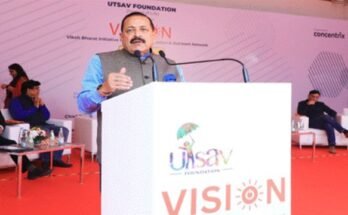The State Bank of India (SBI) merger with its five associate banks is likely to close the door to future job recruitment at the merged entity. It is estimated that there could be reduction of 25-30 percent in hirings at the unified bank. In number terms, hiring could come down by 30,000 jobs in the next one year.
“SBI’s average recruitment are about 15,000-20,000 every year and last year, we recruited about 19,000 people. Every year we also have 8,000-10,000 people retiring, so we will just end up recruiting fewer people. Much of the additional hiring will depend on the growth and the merger’s purpose is growth,” said Dinesh Kumar Khara, Managing Director at State Bank of India.
Last month, the central government approved the merger of the SBI and its five subsidiary banks — State Bank of Bikaner and Jaipur (SBBJ), State Bank of Hyderabad (SBH), State Bank of Mysore (SBM), State Bank of Patiala (SBP) and State Bank of Travancore (SBT).
Moorthy K Uppaluri, CEO, Randstad India, a global human resource consulting firm, said, “With the subsidiary bank employees coming to SBI, so there will be functional redundancies, so the growth of new recruits may freeze for some time. There could be operational challenges in the next 6 months to 2 years. SBI will focus on new skills not just because of the merger given the technology automation and changing regulations.”
According to Ajay Shah, Associate Vice President at TeamLease, another recruitment consultancy and human resource firm, “SBI’s appetite to hire definitely reduces and generally they hire about 25,000-30,000 people annually through the exams and lateral hiring. So, the job opportunities will be lesser by at least 25-30 percent.”
Since 2013, SBI has been consistently reducing its headcount by about 6000-7000 employees every year. This shows they are recruiting fewer people than those retiring each year. SBI Chairman Arundhati Bhattacharya had once also said that technology will require the bank to recruit fewer people.
On an average, the annual net recruitment at the five associate banks have come down by more than half to nearly 200-300 in the last 2 years.
The SBI chief has said that post-merger, there will be no losses of jobs or salaries in the process. However, the merger will result in rationalization of 20 percent of its branches.
Rajnish Kumar, Managing Director (National Group), SBI said it will merge about 1500 branches. “In next two years, the overall number of branches will remain more or less same at about 24,000, which is at present…In 2-3 years the number of people required will not grow and lot of inefficiencies will be removed.”
After the merger, SBI will be adding over 6,000 branches from its associates and additional 70,000 employees taking the total headcount to 2.71 lakh. As on December end 2016, the total staff strength of SBI alone stood at 200,820.
According to CH Venkatachalam, General Secretary, All India Bank Employees’ Association (AIBEA), future recruitments will be stopped as they plan not to hire in the positions that will see retiring officers in the next 3-4 years.
He said, “Banking is the only sector creating jobs and the biggest bank will not recruit. It will lead to a reduction of jobs up to 2 lakh.” Since the merger proposal, rationalization of branches and the cost structure in terms of HR have been highlighted as its key challenges.
Note: News shared for public awareness with reference from the information provided at online news portals.



